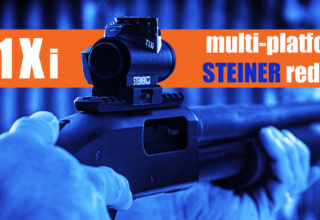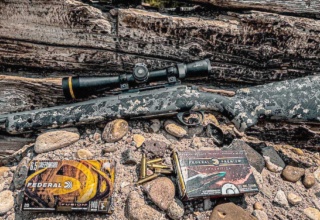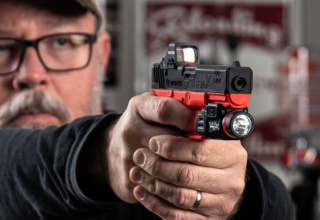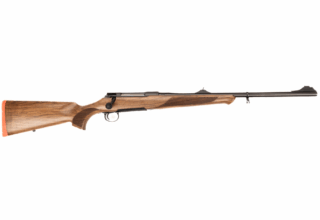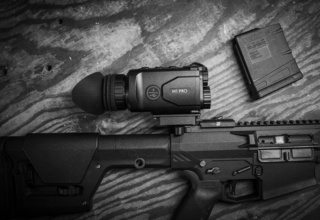A precision-grade riflescope with all the bells and whistles, Steiner’s Predator 8 promises clarity, customization, functionality, and more. There’s no question the Shoot-On team will find a home for a few of these optical wonders on our favorite rifles.
by Jace Bauserman
I’m a hoarder. I’m trying to understand why. It doesn’t run in the family. For some reason, though, certain items catch my eye, and I stockpile them.
Optics are one such item. I have quite the collection, from rangefinders to scopes to binos to spotters. Sure, I will occasionally part with one (give it away), but I have three kids, a bride that hunts, and one day, hopefully, grandkids.
Then, of course, I need a solid selection for the zombie apocalypse (just kidding) that’s coming. Yikes! Mostly, though, I love them. Optics are unique, and each optic I test has at least one or two features I love. If this is the case, that optic becomes part of the BOC (Bauserman Optic Collection).
My next add is Steiner’s Predator 8 3-24×50. I’m not blowing smoke at you; this scope will work for any hunting style, but for me, it will be specifically for long-range western big game and banging steel at a distance.
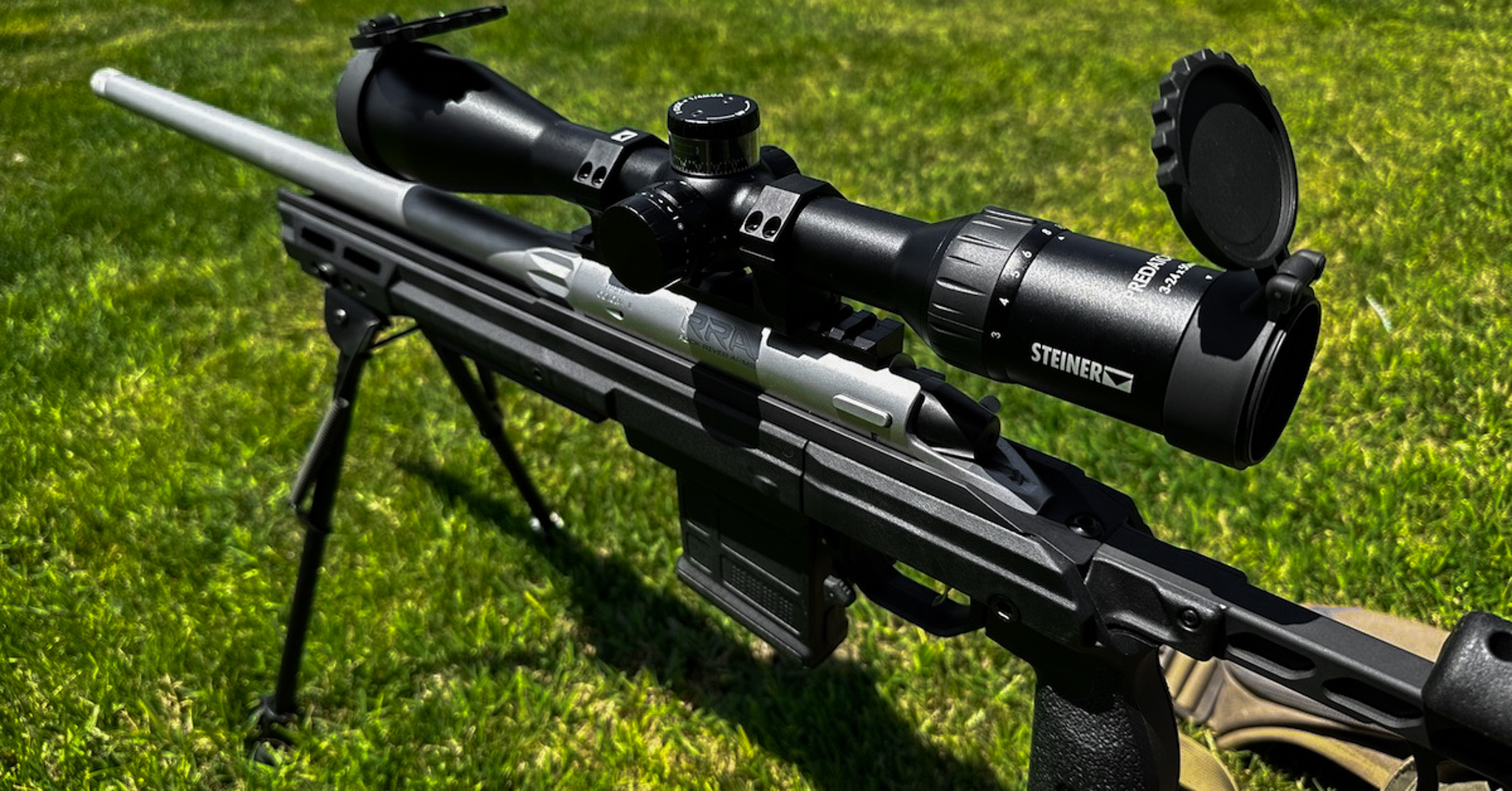
First Impressions
The rifle topper is an out-of-box stunner. I love the black housing with white letters and numbers. This thing is sexy. I applaud the addition of the flip-up scope covers on the eyepiece and objective lens. Any scope with a price tag over $2K should have this feature, and most don’t.
I liked the rubberized and raised focus wheel. The tear-drop-style raised portion isn’t excessive but provides a solid grip, and the focus wheel turns smoothly without slop.
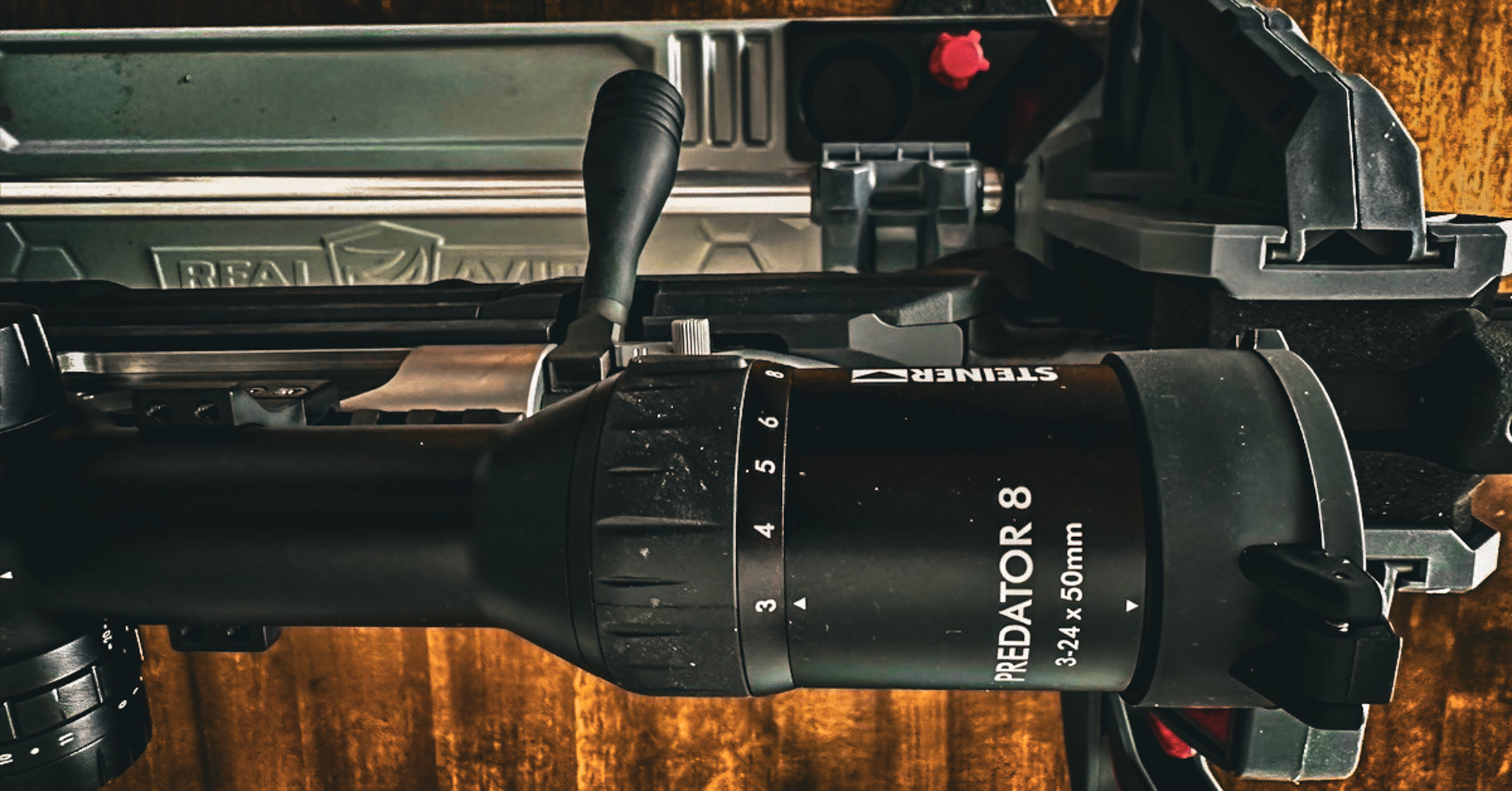
A glance into the eyepiece showed a rear focal plane reticle with descending elevation marks and windage dots. The scope wasn’t yet mounted, but the glass looked clean and clear, as expected.
The windage turret is on the right side of the scope and covered by a threaded cap. Use looked elementary — a single click is 1/4-inch MOA — and the turret turns by hand. Like the focus wheel, all turrets are smooth, clicks produce a slight audible noise, and there is zero slop.
The elevation turret is on top of the scope and is wildly advanced. We will dive more into the many features of this turret, but know it allows the shooter to dial for bullet drop, and moveable rings mean you can set custom distances for rapid dialing.
Light It Up
The illumination control shares space with the parallax adjustment knob. This control also showcases the scope’s parallax adjustment from 20 yards to infinity. A breeze to use, the illumination control features six night and five day settings with a sun and a half-moon visuals for reference. For day settings, roll the dial to the sun, which is a non-powered setting, and then turn the dial toward the objective lens while looking through the scope to see the red LED variations. Each rotation toward the objective lens provides a different brightness level. I love that the light goes off between clicks. This way, the eyes quickly adjust to each brightness setting, allowing you to pick the right one.
Using night illumination is the same, but you turn the dial to the half-moon graphic and then rotate the dial toward the eyepiece.
Mount Up
Before mounting Steiner’s Predator 8 3-24×50, I placed Rock River’s Rock Bolt Gun RBG-1S chambered in 6.5 Creedmoor in Real Avid’s Master Gun Work Station and locked it down. I love this new-for-2023 creation from Real Avid. It allows me to do everything from optic mounting to gun cleaning and gun work.

I went to work with my bolt gun held tightly in the vise. The RGB-1 sports a Picatinny rail optic mount, and I used Steiner’s H-Series lightweight rings in matte black to attach the scope to the 30mm tube.
The attachment was easy. I set the bases, placed the tube in the bases, and moved the scope in and out to get an exact field of view. Next, I checked to ensure the optic’s eyepiece end didn’t interfere with the bolt.
My next step in mounting was to put the rings over the attached bases and lightly snug them down with a T-15 hex-head torque driver. Then I leveled the scope, checked my field of view, and locked the hex-head screws down.
At The Range
My first step at the range was to zero the scope at 100 yards. After a quick boresight, dialing the scope and rifle combo at 100 yards was a breeze. My ammunition of choice was Federal’s 6.5 Creedmoor Soft Point 120-Grain Trophy Copper.
With Rock River’s Bolt Gun RBG-1S, which offers more shooter customization than you can shake a stick at, I touched a trio of rounds in a paper target at 100 yards.

This 100-yard group was shot at 8 a.m. and the outside temperature was 74 degrees with the wind at my back at three miles per hour.
Setting The Rings
With the rifle zeroed at 100 yards, I engaged the scope’s ZeroMode. I did this by removing the three screws on the outside of the turret — Steiner calls them grub screws — and then turning the dial clockwise until I felt resistance. Then I retightened the grub screws. With the ZeroMode set, you can always get an immediate return to the scope’s zeroed distance. All you have to do is roll the dial and wait for the ZeroMode to engage. This stops the dial. It’s an excellent feature.
Next, I removed the rings by unscrewing the Allen screws in the elevation turret cap with the included wrench. Next, I removed the transparent cover, a significant protective feature that allows clear viewing of your dial.
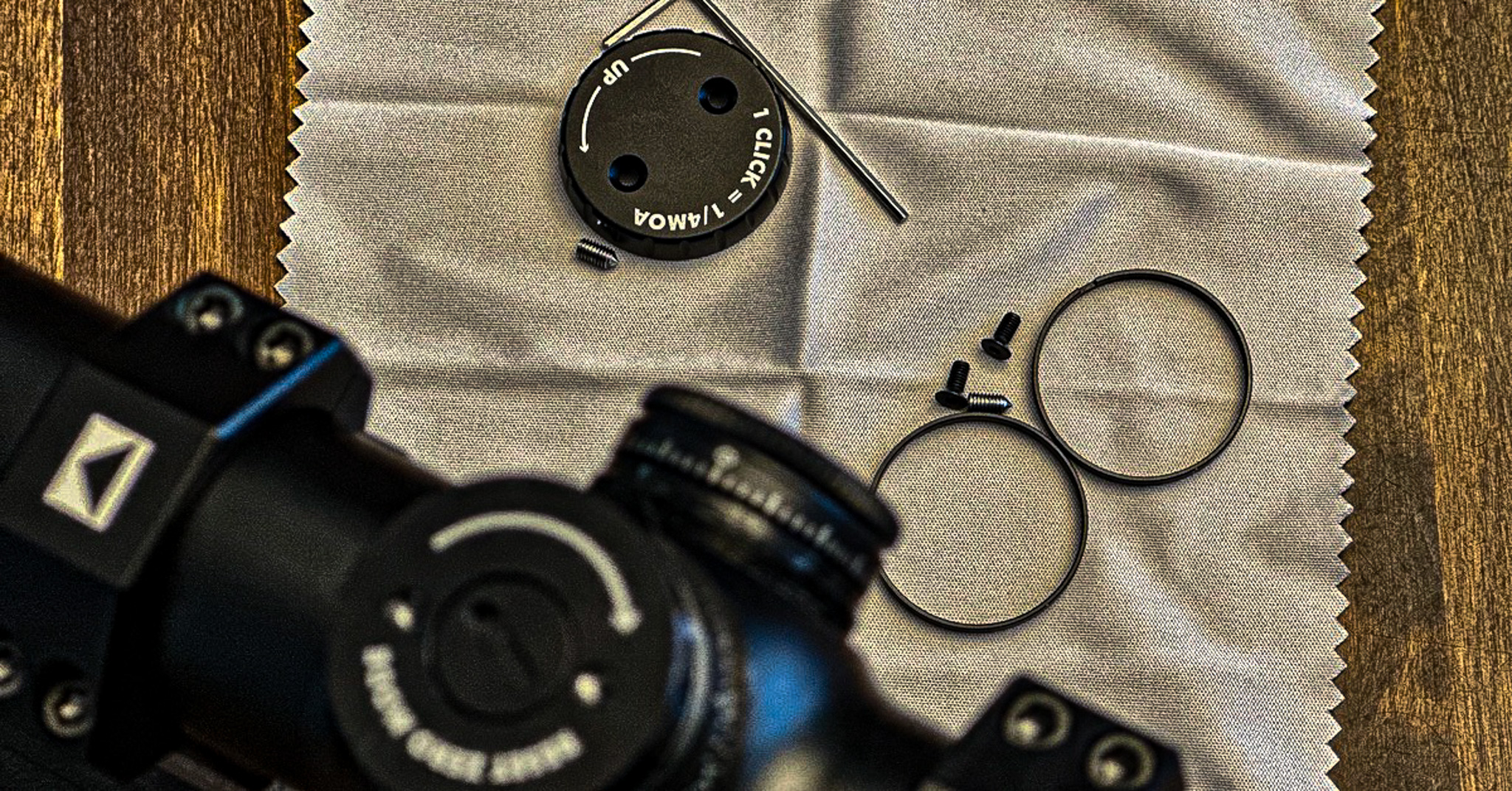
With the cap and cover off, the rings slide over the top of the turret. There are three rings, and I did use a small flathead screwdriver to create separation between the rings before working them off the turret from the bottom to the top.
How The Rings Work
Next, I sighted the rifle/scope/ammo combo in at 200 yards. After several three-shot groups that fit inside a 1.5″ diameter circle, I inserted the ring with the labeled 2 in the first slot above the marked elevation turret.
After completing this step, I returned the scope to ZeroMode and shot another 100-yard group to confirm. Then, I punched steel at 200 yards by quickly turning my dial to the labeled 2 on the first ring. My shots were all spot on.
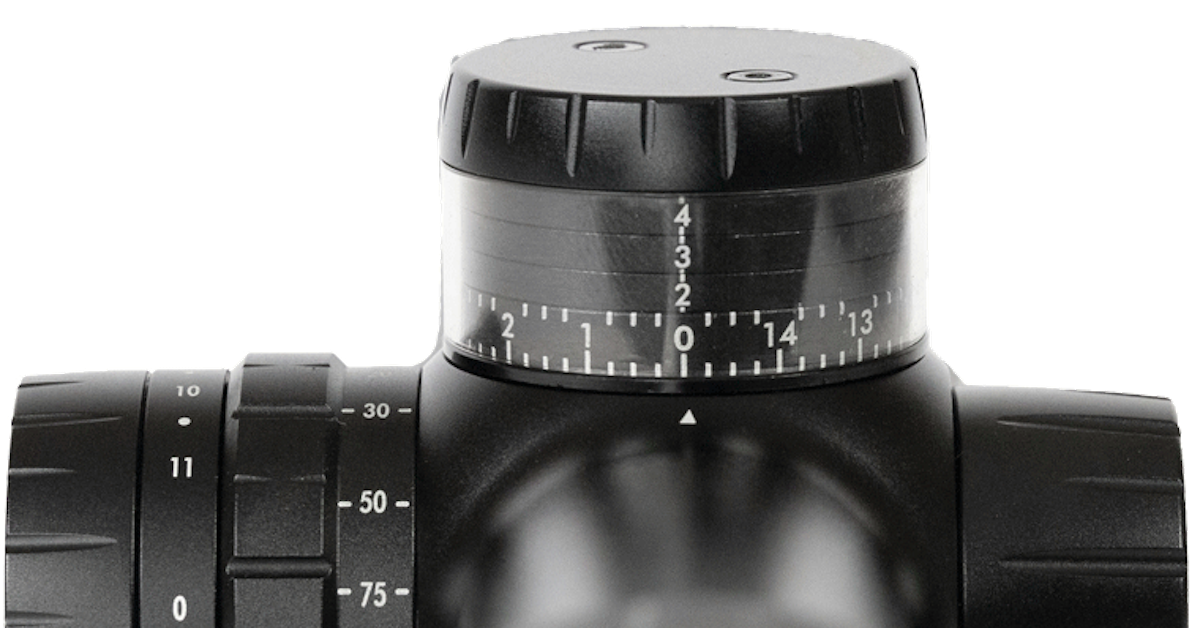
I repeated this process with the 3 (for 300 yards) labeled ring and 4 (for 400 yards) labeled ring. The rings simply stack on top of one another, and the marks are easily visible through the transparent cover.
Things I Loved
I’m old school and didn’t use a ballistic app. I like to learn about my scope/rifle/ammo combo; the best way to do that is to shoot it. Getting Steiner’s Predator 8 3-24×50 dialed to 400 yards took most of the day. Not because the scope is complicated or the rifle didn’t shoot well — quite the opposite. Instead, the rising temperature, which topped out at 102 degrees Fahrenheit combined with the fast-shooting 6.5 Creedmoor, heated the barrel regularly. For an actual accuracy test and to set the scope properly with the included rings, the barrel had to cool for extended periods.

Once set, the rings allow for immediate set yardage dialing, and the ZeroMode means an absolute return to the scope’s zero setting. I love this feature and how easy it was to accomplish.
Another big notice of this scope was the clarity of the glass, the extensive field of view, and the generous eye relief. No matter the lighting conditions, I had zero trouble acquiring and hammering my target.
I did use several illumination settings, and found the daylight settings helpful as heat refractions distorted my sight picture. I also discovered that the Predator 8 is remarkable at channeling every ounce of available light. When paired with the scope’s illumination, I could bang steel at a distance well after the horizon swallowed the sun.
Final Thoughts
Don’t think for a second I’m downplaying the effectiveness of Rock River’s Rock Bolt Gun RBG-1S. I will have a full review of the rifle posted on our sister site Born Hunting in the coming days. This rifle is a tack driver, and I appreciated its rapid bolt throw, oversized bolt handle, fully customizable KRG Chassis, et cetera. This gun proved remarkably accurate and was a riot to shoot.
As for Steiner’s Predator 8, it’s an optical achievement. I love the uber-powerful 8-power system and how easy this long-range scope is to set up and use. I’m excited to put it to the test in more diverse environments for multiple big-game species this fall.
Steiner Predator 8 3-24×50 Specifications
- Magnification: 3-24X
- Reticle: E3
- Objective Lens: 50mm
- Focal Plane: 2nd
- Tube Diameter: 30mm
- Field of View at 100 Meters: 1.6m-12.6m/5.2ft-41.3ft
- MSRP: $2,184.99


